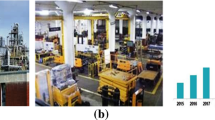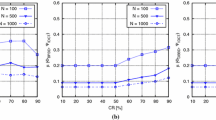Abstract
In recent years, Body Area Networks (BANs) have gained immense popularity in the domain of healthcare as well as monitoring of soldiers in the battlefield. Security of a BAN is inevitable as we secure the lives of soldiers and patients. In this paper, we propose a security framework using Keyed-Hashing Message Authentication Code (HMAC-MD5) to protect the personal information in a BAN. We assume a network in which nodes sense physiological variables such as electrocardiography (EKG), electroencephalography (EEG), pulse oximeter data, blood pressure and cardiac output. Heterogeneous wireless sensor network is considered which consists of a powerful High-end sensor (H-sensor) and several Low-end sensors (L-sensors). EKG is used for secure communication between nodes as it introduces plug and play capability in BANs. The process is made secure by applying HMAC-MD5 on EKG blocks. Key agreement is done by comparing HMAC of feature blocks between sensors resulting in a more secure network. The analysis is done by calculating the entropy of keys and checking the randomness of EKG data using NIST-randomness testing suite.









Similar content being viewed by others
References
Ali A, Khan FA (2010) An improved EKG-based key agreement scheme for Body Area Networks. In Proc. of International Conference on Information Security & Assurance (ISA 2010), Miyazaki, Japan, CCIS 76, pp 298–308
Cavoukian A, Stoianov A, Carter F (2008) Biometric encryption: technology for strong authentication, security and privacy. Policies and research in identity management, IFIP Advances in Information and Communication Technology, Vol. 261, pp 57–77
Godbole AP, Papastavridis SG (eds) (1994) Runs and patterns in probability: selected papers. Kluwer, Dordrecht
Gupta S, Venkatasubramanian KK, Banerjee A (2008) EKG-based key agreement in body sensor networks. IEEE INFOCOM Workshops, Phoenix, AZ, pp 1–6
Kausar F, Saeed MQ, Masood A (2008) Key management and secure routing in heterogeneous sensor networks. IEEE International Conference on Wireless & Mobile Computing, Networking & Communication (WIMOB’08), Avignon, France, pp 549–554
RFC2104 - HMAC: Keyed-hashing for message authentication
RFC2202 - Test Cases for HMAC-MD5 and HMAC-SHA-1
Saleem S, Ullah S, Seon yoo H (2009) On the Security Issues in wireless Body Area networks. International Journal of Digital Content Technology and its Applications Vol. 3, No. 3, pp 178–184
Mana M, Feham M, Bensaber BA (2009) SEKEBAN (Secure and Efficient Key Exchange for wireless Body Area Network), International Journal of Advanced Science and Technology, Vol. 12, pp 45–60
Venkatasubramanian KK, Banerjee A, Gupta SKS (2009) PSKA: usable and secure key agreement scheme for Body Area Networks. IEEE Trans Inf Technol Biomed Vol. 14, Issue 1, pp 60–68
Venkatasubramanian K, Gupta SKS, Security for pervasive health monitoring sensor applications. In Proc. of 4th International Conference on Intelligent Sensing and Information Processing (ICISIP'06), Bangalore, India, December 2006, pp 197–20
Author information
Authors and Affiliations
Corresponding author
Rights and permissions
About this article
Cite this article
Ali, A., Irum, S., Kausar, F. et al. A cluster-based key agreement scheme using keyed hashing for Body Area Networks. Multimed Tools Appl 66, 201–214 (2013). https://doi.org/10.1007/s11042-011-0791-4
Published:
Issue Date:
DOI: https://doi.org/10.1007/s11042-011-0791-4




